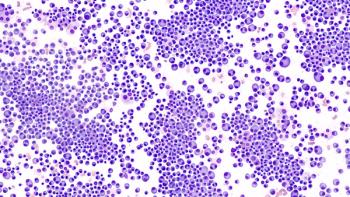
Gene Expression Poised to Become Multiple Sclerosis Treatment Target
Controlling cholesterol synthesis expression may reduce walking disability in patients with multiple sclerosis.
A novel study published by the Proceedings of the National Academy of Sciences suggests that gene expression in certain cells may have a neuroprotective effect and could be a beneficial therapy for patients with neurological diseases, such as
Gene expression is a process in which instructions are used to synthesize essential gene products. The authors noted that increasing cholesterol synthesis gene expression in the astrocytes of the spinal cord may repair nerve damage that affects walking in patients with MS.
The type and severity of disability varies for each patient and worsens as the immune system destroys myelin.
In the new study, the authors found that the mechanisms behind each type of MS-related disability varies. They believe that treatments targeting specific disabilities would be a more effective MS therapy compared with treatments that address multiple symptoms.
The researchers specifically investigated astrocytes, which is a type of brain cell that is activated in patients with MS.
In mouse models of MS, the authors examined astrocytes in regions of the brain and spinal cords that play a role in walking, vision, and cognition. They also compared alterations in gene expression in regions that result in different disabilities.
Specifically, in the spinal cord, the authors observed a lower expression of cholesterol synthesis genes. This finding is notable because cholesterol is produced by astrocytes and is involved with myelin creation, according to the study.
The authors suggest that although inflammation sparks demyelination, the reduction in cholesterol synthesis gene expression in brain cells may block the repair of myelin and nerves.
When mice were treated with a drug that boosted expression in cholesterol synthesis genes, walking ability improved, according to the study.
“Findings herein also have implications for the role of astrocytes in the immunopathogenesis of MS,” the authors wrote.
These results may hold the key to a novel treatment approach for neurodegenerative diseases that is tailored to mend damage for each individual disability rather than many at once, the authors concluded.
“Discovery of cell-specific and region-specific molecular signatures of disease in preclinical models can provide novel targets tailored for each neurological pathway in MS as a strategy to optimize neuroprotective treatment development,” the authors wrote. “This disability-specific approach that begins with discovery and ends with clinical trial design represents a strategy for finding neuroprotective treatments, not only for MS but also for other multifocal neurodegenerative diseases.”
Newsletter
Stay informed on drug updates, treatment guidelines, and pharmacy practice trends—subscribe to Pharmacy Times for weekly clinical insights.


















































































































































































































